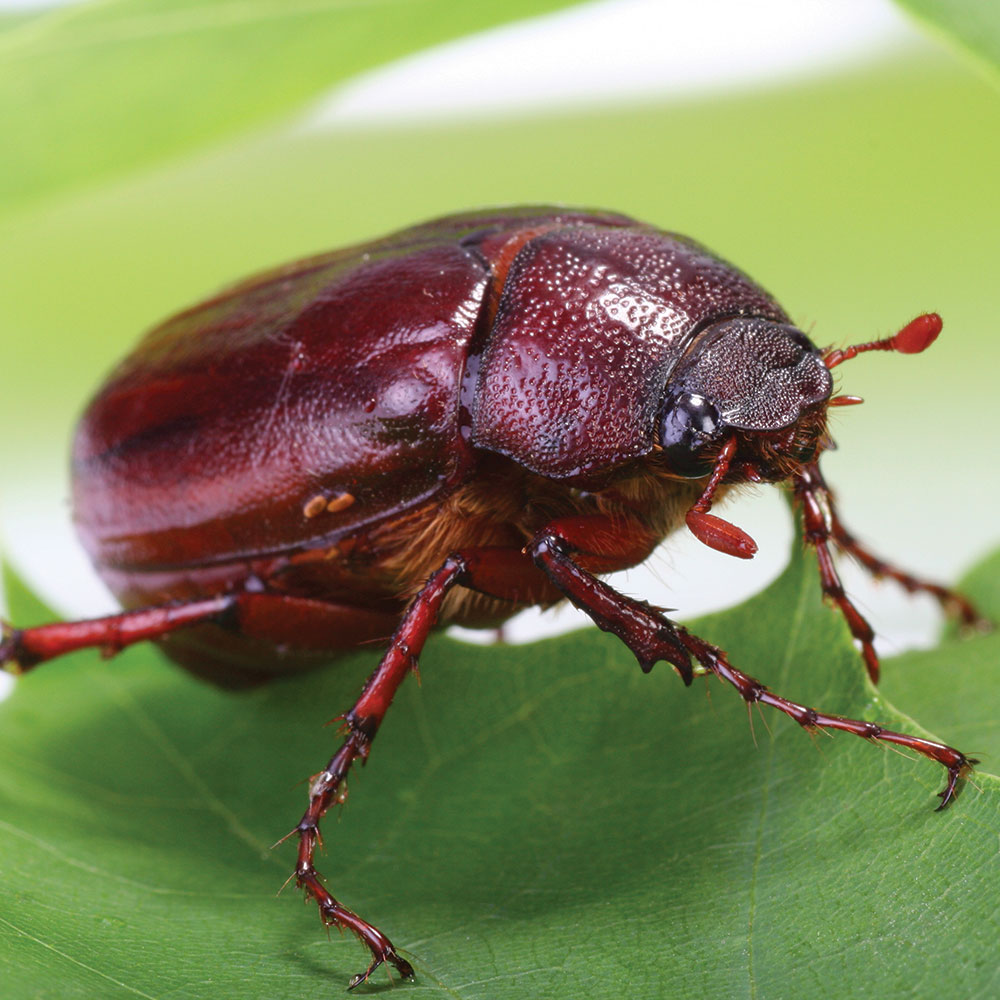Harbingers of Summer: The June Bug
The Great Outdoors | May 4, 2022

By Jackie Scharfenberg, Forest Naturalist, Wisconsin Department of Natural Resources
Coming in for a landing! WATCH OUT! C-R-A-S-H!
Excuse me while I get myself back on my feet. As a June bug, with hardened outer wings (elytra) and membranous underwings, we make for clumsy fliers. Good thing we only fly short distances.
Beetles NOT Bugs
Now for the formal introductions – Some call us June bugs, but we are NOT bugs. We belong to the beetle order Coleoptera, the family Scarabaeidae (Scarab beetles – like those of Egypt fame), and the genus Phyllophaga (leaf eater). Scientists have documented about 29 Phyllophaga species in Wisconsin, and more than 200 species reside throughout North America.
We appear from our underground burrows in late May and the first part of June, hence our common name. It takes us several hours to emerge after sunset. But as the sunrises, we all head back underground in a matter of a few minutes. Under the cloak of darkness, we fly to trees and other plants to feed on the leaves.
Our Young
We also mate during the night. The females give off a pheromone (a special scent) that the males pick up. After mating, the female burrows into the soil to lay her eggs singly or in small groups.
The eggs hatch into cream-colored grubs (larvae) with reddish-brown heads and six pairs of legs. They possess a distinctly c-shaped body. With their strong mandibles, they feed on roots and sometimes other dead plant material found in the soil. Over two years, they pass through three stages called instars; growing up to 1.25 inches long. At the end of the second summer, the larva fashions a chamber in which it forms pupa. Before winter, the adults emerge and then spend the winter underground until the following spring. All the June bugs in Wisconsin, except one, go through this three year life cycle.
Our Appearance
If you want a close-up look at one of us, head outside after dark and go to an area with a light. We love to shine in a “spot” light. We would never hurt you, but be warned, we may grab onto your clothing or a window screen with our gangly, sticky legs. Our shiny reddish brown to almost black bodies may measure from .5 to 1 inch long making us a rather large beetle. If you inspect our antennae, you will see three plates at the very end of them that we can open and close like a fan; great for picking up those female pheromones.
Our Predators
If you ever find what looks like divots from a golfer scattered over your lawn, that could be from one of our predators. Skunks, raccoons, wild turkeys, sandhill cranes, and even crows will dig up turf to snag our larvae. Those predators think our young make tasty snacks. We rarely cause damage to lawns or crops ourselves, but may when our numbers grow large.
As you hear us crash into your window screens at night and buzz to right ourselves, just think of us as the harbingers of summer and not just a clumsy flying beetle!



